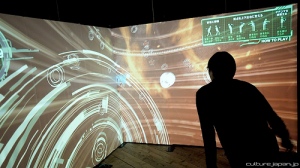Earlier this fall, Microsoft announced that its Xbox 360 would soon offer special games and TV shows associated with several well-known children's programs, including Sesame Street and Nat Geo Wild. The plan, says Microsoft, is to create shows that would foster a new kind of "playful learning," tying them to the capabilities of the Microsoft Kinect device.
The timing of the news wasn't great: the same day Microsoft unveiled its new toddler-friendly Kinect games, the American Academy of Pediatrics issued a report urging no or limited screen time for children under age 2.
But bringing the Kinect to children's television is an intriguing proposition. Microsoft say that it’s filming new TV shows and building new games that “seek to inspire kids and their parents to get off the couch and into the action, working cooperatively with their favorite characters to have fun and learn at the same time.” Fun, learning and even physical activity are often invoked when it comes to children's programming -- and it's something that the American Academy of Pediatrics challenges us to think about: while the shows might tout educational content, research actually suggests there are some negative consequences of TV on toddlers' development.
Of course, Sesame Street, while geared at young children (those in preschool and early elementary levels), is aimed at those older than age two. But the cautionary note the American Academy of Pediatrics makes is still worth considering.
Yet the Kinect does add a new twist to children's television viewing. The Kinect is a motion-sensing input device for the Xbox 360 game console. That means that with it, users can control their video games -- and now their television shows -- without having to use a game controller. Instead, the Kinect senses bodies, gestures and voice, and by using the “controller-free magic of Kinect,” says Alex Games, educational design director for Microsoft, “we can encourage kids to use their motor skills and to learn using their body in immersive experiences.”


